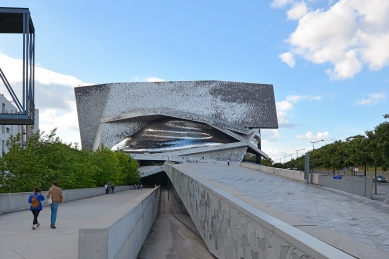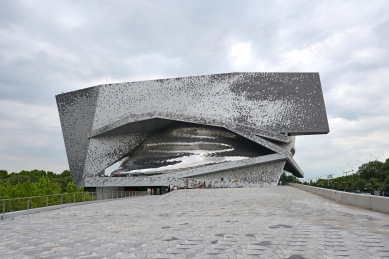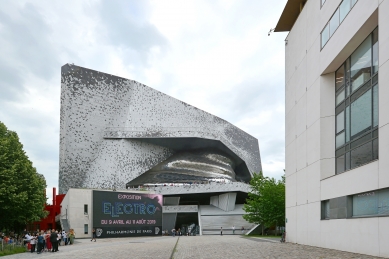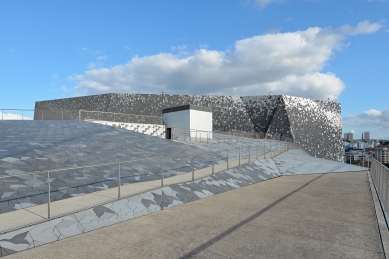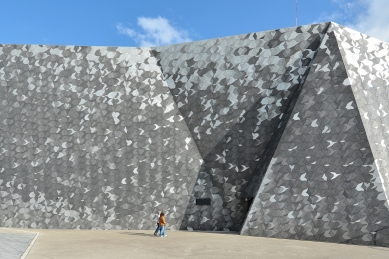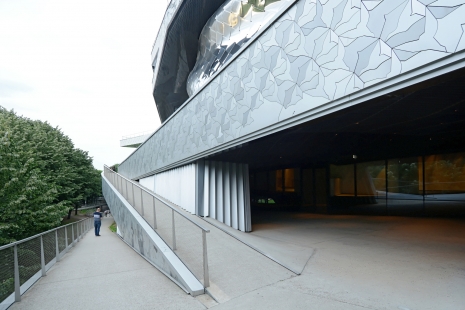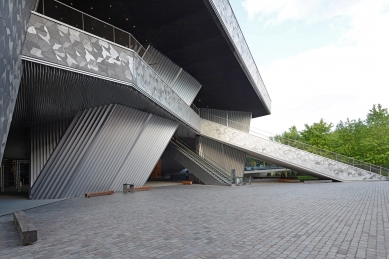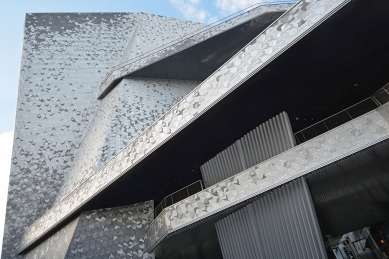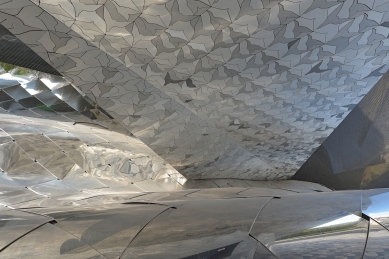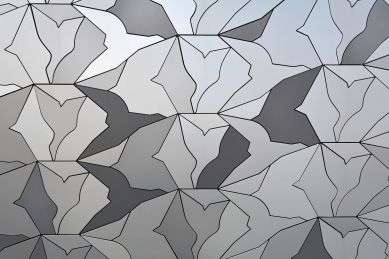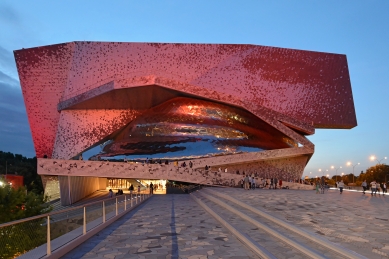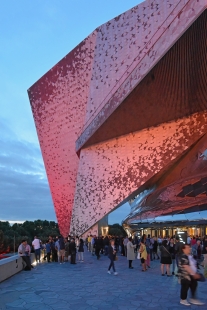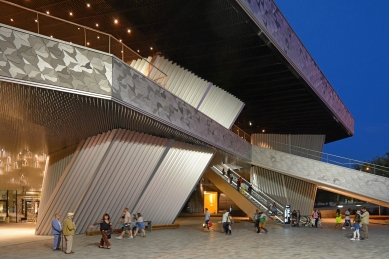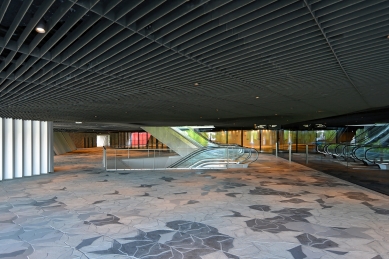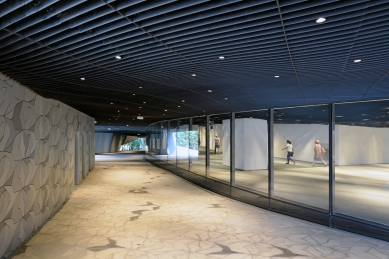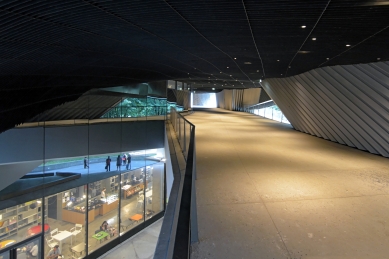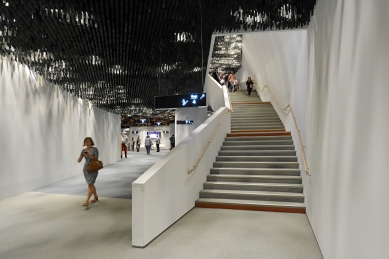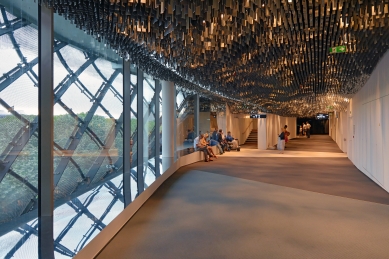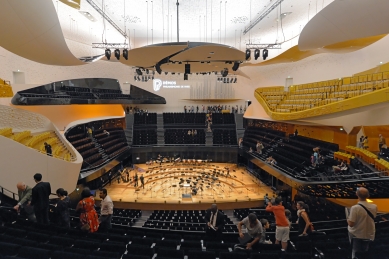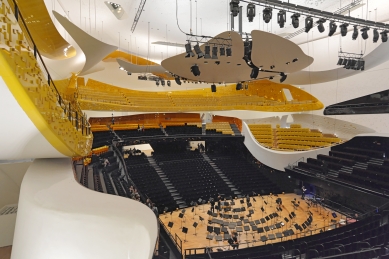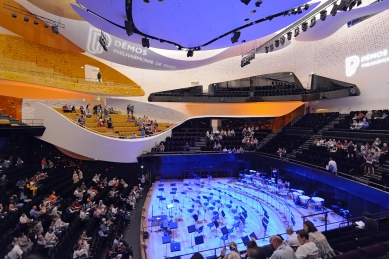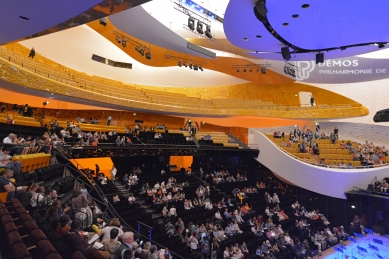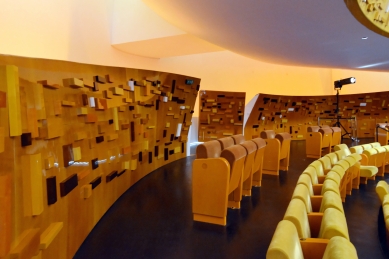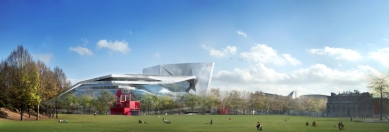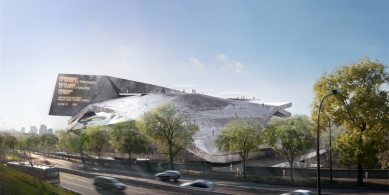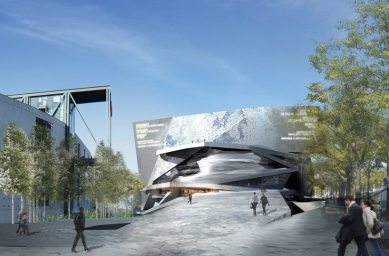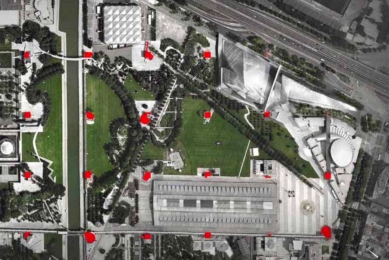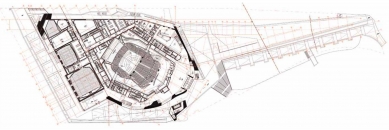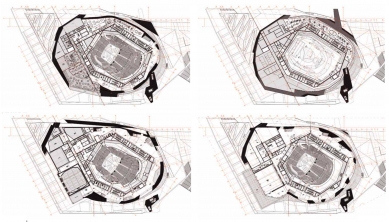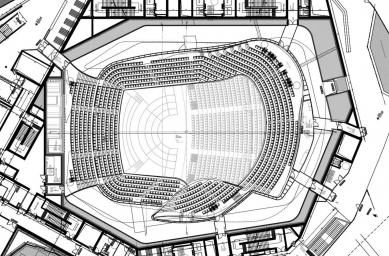
Paris Philharmonic
The Philharmonie of Paris

Parc de la Villette, located on the site of former slaughterhouses in the 19th arrondissement, is one of the largest public parks in Paris, covering an area of 55 hectares. The current layout of the park, structured in a square grid of red pavilions, emerged from a competition proposal by Swiss architect Bernard Tschumi, who drew heavily from the first round of the project by the flying Dutchman Rem Koolhaas. In addition to water channels, long avenues, and grassy areas inviting relaxation, the site also features a science and technology museum, as well as a theater and concert hall, offering a rich year-round program.
The most recent addition to the Parc de La Villette is the concert hall for the Paris Philharmonic, created according to the winning design by local architect Jean Nouvel. The new concert hall is connected to the Cité de la Musique conservatory by Christian de Portzamparc (the western wing completed in 1990 and the eastern wing in 1995). This musical sanctuary on the eastern edge of the park can also be perceived as a tribute to Nouvel's teacher Claude Parent and the realization of his visions from the 1960s about giant inclined surfaces and sloped cities, where residents would live on slopes in a newly arranged space based on a healthy lifestyle and the joy of physical movement.
The organically shaped main hall Pierre Boulez, with a capacity of 2400 spectators, is enveloped in a metallic shell with sharply cut features, allowing visitors to access a publicly accessible rooftop terrace at a height of 37 meters via outdoor ramps. The total height of the building is 52 meters. One of the "tectonic plates" simultaneously serves as a projection surface of impressive dimensions 100 x 50 meters. The aluminum templates on the facade are meant to represent hundreds of thousands of birds soaring above the park and over the heads of visitors.
Nouvel drew inspiration from the principle of vineyard rows known from Scharoun's Berlin Philharmonic for the arrangement of the seats in the auditorium. In the Paris case, it was possible to bring spectators as close as possible to the musicians, with even the most distant seat located 32 meters from the conductor. To bring the Philharmonic closer to ordinary Parisians, the intended number of classical concerts was reduced from 270 to 150, and the program is diversified with more genres, including rock and rap concerts.
During the same period, the Elbphilharmonie was also being created, located in a prominent spot in the Hamburg harbor. This iconic building by world-famous architects was also accompanied by controversies, delays, and multiple cost overruns. In the case of the Paris Philharmonic, the schedule was delayed by two years, and the budget exceeded three times. The architect was labeled as the culprit, who then boycotted the grand opening on January 14, 2015, in the presence of French President François Hollande. Jean Nouvel was given an unprecedented fine of 170.6 million euros for the delays. His lawyers appealed against the damaging verdict at the end of the last trial.
On the contrary, Jean Nouvel accused the French government of sabotaging the project back in 2015. The rushed construction work before the opening of the Philharmonic led Nouvel to renounce authorship until all 26 points he listed in the newspaper Le Monde were rectified: "the exterior pavement was damaged over an area of more than 5200 m², the details of the facade and stairs show disproportionately large gaps and unconnected joints, in the main hall, the curtains of the acoustic panels that were supposed to remain hidden to the audience are visible, in the lobby, the visible conduits over an area of more than 7300 m² were supposed to be painted dark, safety edges are glued directly onto the stair treads, and instead of working with solid wood, the result gives a DIY impression,..." Legal proceedings continue even five years after the opening of the Philharmonic and are likely to drag on for some time.
The most recent addition to the Parc de La Villette is the concert hall for the Paris Philharmonic, created according to the winning design by local architect Jean Nouvel. The new concert hall is connected to the Cité de la Musique conservatory by Christian de Portzamparc (the western wing completed in 1990 and the eastern wing in 1995). This musical sanctuary on the eastern edge of the park can also be perceived as a tribute to Nouvel's teacher Claude Parent and the realization of his visions from the 1960s about giant inclined surfaces and sloped cities, where residents would live on slopes in a newly arranged space based on a healthy lifestyle and the joy of physical movement.
The organically shaped main hall Pierre Boulez, with a capacity of 2400 spectators, is enveloped in a metallic shell with sharply cut features, allowing visitors to access a publicly accessible rooftop terrace at a height of 37 meters via outdoor ramps. The total height of the building is 52 meters. One of the "tectonic plates" simultaneously serves as a projection surface of impressive dimensions 100 x 50 meters. The aluminum templates on the facade are meant to represent hundreds of thousands of birds soaring above the park and over the heads of visitors.
Nouvel drew inspiration from the principle of vineyard rows known from Scharoun's Berlin Philharmonic for the arrangement of the seats in the auditorium. In the Paris case, it was possible to bring spectators as close as possible to the musicians, with even the most distant seat located 32 meters from the conductor. To bring the Philharmonic closer to ordinary Parisians, the intended number of classical concerts was reduced from 270 to 150, and the program is diversified with more genres, including rock and rap concerts.
During the same period, the Elbphilharmonie was also being created, located in a prominent spot in the Hamburg harbor. This iconic building by world-famous architects was also accompanied by controversies, delays, and multiple cost overruns. In the case of the Paris Philharmonic, the schedule was delayed by two years, and the budget exceeded three times. The architect was labeled as the culprit, who then boycotted the grand opening on January 14, 2015, in the presence of French President François Hollande. Jean Nouvel was given an unprecedented fine of 170.6 million euros for the delays. His lawyers appealed against the damaging verdict at the end of the last trial.
On the contrary, Jean Nouvel accused the French government of sabotaging the project back in 2015. The rushed construction work before the opening of the Philharmonic led Nouvel to renounce authorship until all 26 points he listed in the newspaper Le Monde were rectified: "the exterior pavement was damaged over an area of more than 5200 m², the details of the facade and stairs show disproportionately large gaps and unconnected joints, in the main hall, the curtains of the acoustic panels that were supposed to remain hidden to the audience are visible, in the lobby, the visible conduits over an area of more than 7300 m² were supposed to be painted dark, safety edges are glued directly onto the stair treads, and instead of working with solid wood, the result gives a DIY impression,..." Legal proceedings continue even five years after the opening of the Philharmonic and are likely to drag on for some time.
The English translation is powered by AI tool. Switch to Czech to view the original text source.
0 comments
add comment


